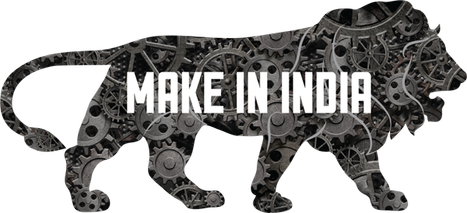“This was an effort that began ten years ago with an ambitious aim - to increase India’s strides in manufacturing, to ensure that a talented nation as ours is not merely an importer but an exporter as well. The imprint of ‘Make in India’ has become visible across sectors, including areas where we never even dreamt of making an impact. ~Prime Minister Shri Narendra Modi “
It has been a decade since India embarked on the journey to become the global manufacturing giant. Launched in 2014 by then Prime Minister Narendra Modi, the 'Make in India' program envisioned to overhaul India's industrial scenario by repute of innovation by creating the country as the best destination for industry globally. Today, India is now growing vigorously in its manufacturing sector, which is supported both by numerous private sector initiatives and extensive government reforms. Here is the key to the rising milestones and new opportunities arising.
The Make in India initiative has been somewhat instrumental in the transformation of India's industrial sectors. With a clear focus on sectors such as aerospace, defense, automotive, and electronics, this program has heralded a new era of growth and self-reliance. This year, Union Minister Piyush Goyal was celebrating the 10-year milestone, citing India's emergence as the second biggest mobile phone manufacturer worldwide. Some of the most positive developments have been about PLI schemes in critical sectors such as electronics, pharma, and auto-making. There are 14 sectors under the PLI Schemes covering a total outlay of ₹1.97 lakh crore. By mid-2024, they had also mobilized ₹1.23 lakh crore investment and created 8 lakh jobs sectors driving growth.
India's manufacturing segment constitutes 17% of the country's GDP. Its pace of growth is slated to be one of the fastest in the next decade, and the leaders of the transformation are automotive, electronics, pharmaceuticals, and textiles. The latter, electronics, has literally taken off, and India now ranks second in terms of the manufacturing of mobile phones, with an aim to export a whopping US$1 trillion worth of goods by 2030.
To further this sector, the National Manufacturing Policy of the government further promotes the increase in contribution towards GDP of the sector by 25% by 2025. For this, the development of advanced manufacturing hubs and smart cities is to be promoted under the National Industrial Corridor Development Programme.
Apart from manufacturing growth, the government has introduced PM Gati Shakti, a multimodal transport infrastructure-building initiative that would help streamline supply chains and logistic flows. This is called an enabler on the way to filling in infrastructure gaps, reducing logistics costs, and making the entire industry more efficient. India will become a global manufacturing hub by 2030. It is going to export over $1 trillion worth of goods in a year. A government strategy for digital transformation, automation, and Industry 4.0 technology further builds the competitiveness of Indian industries.
Make in India has completed its first ten years in establishing India as one of the world's manufacturing leaders with significant economic growth, millions of jobs created, and technological innovation. Tomorrow, and for the coming decade at least, the outlook seems bright for India's manufacturing sector, to be a key anchor in the country's journey toward becoming a $5 trillion economy by 2025 and a $30 trillion economy by 2047. with government support, burgeoning infrastructure, and strategic reforms falling into place.
